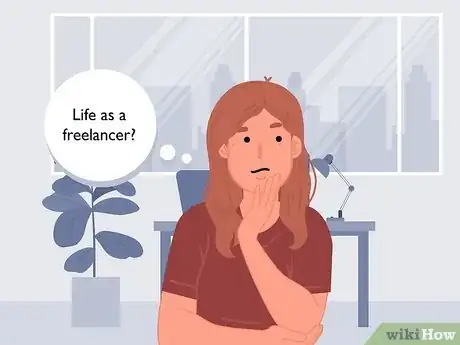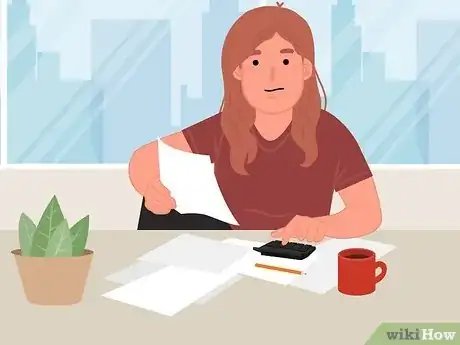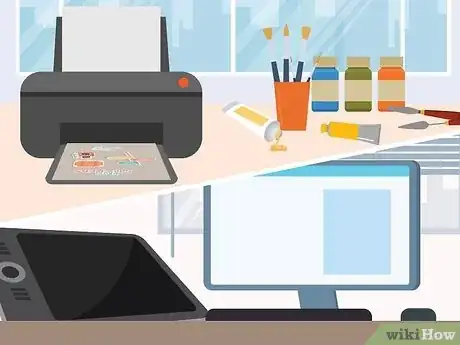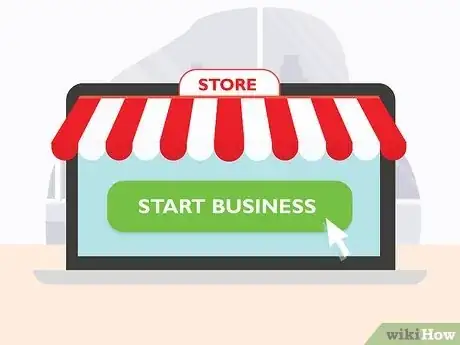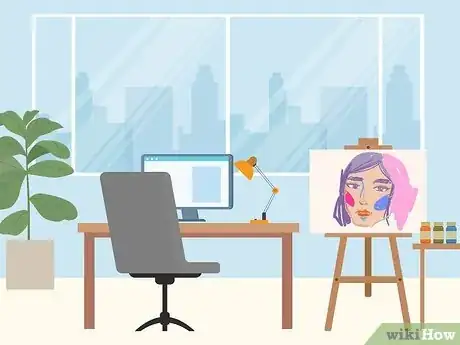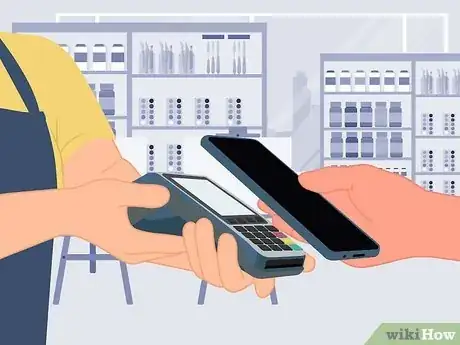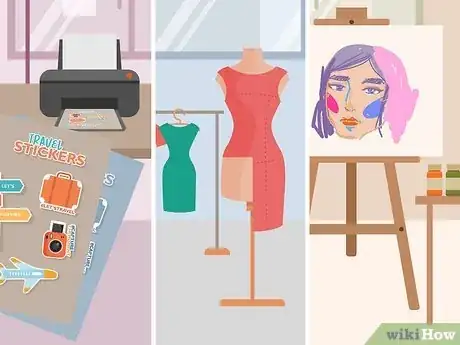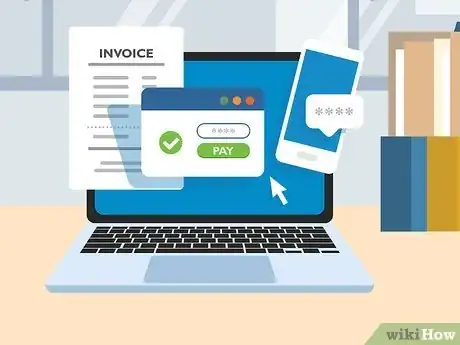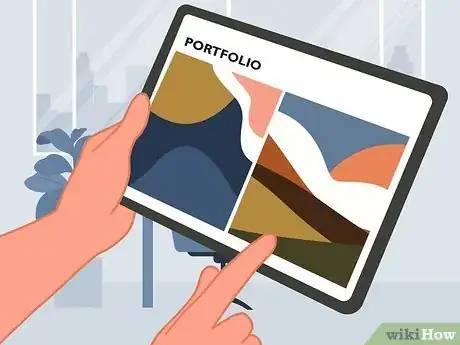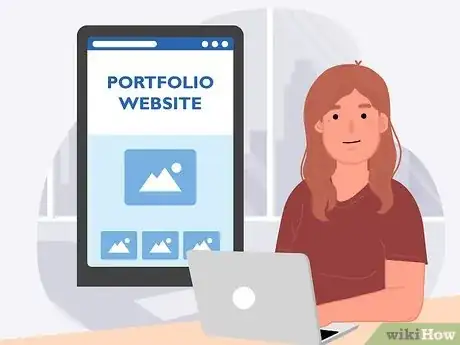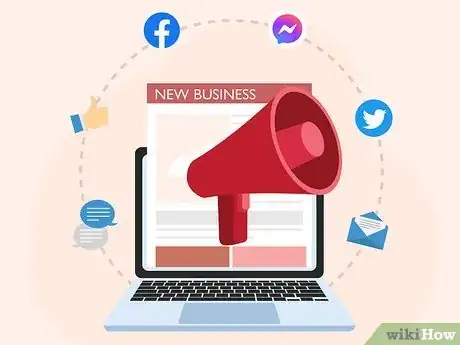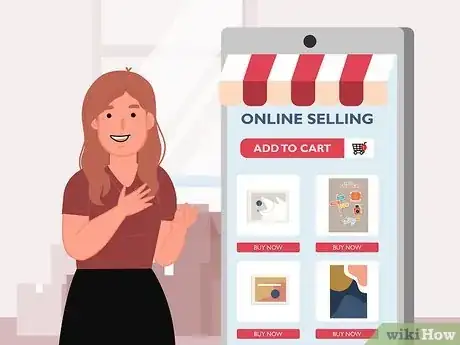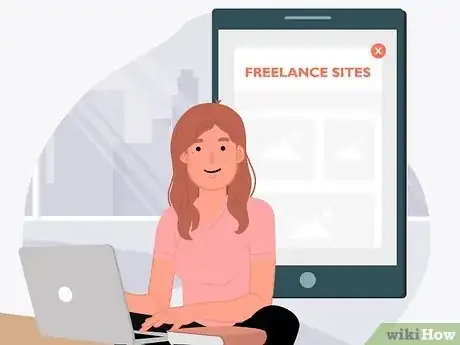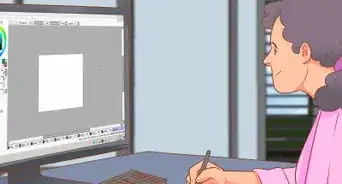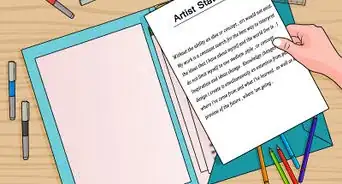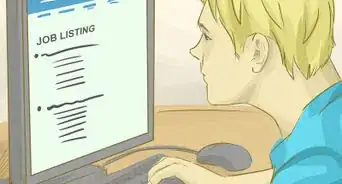This article was co-authored by Natasha Dikareva, MFA. Natasha Dikareva is a San Francisco, California based sculptor, and installation artist. With over 25 years of ceramics, sculpting, and installation experience, Natasha also teaches a ceramic sculpture workshop titled "Adventures in Clay" covering concept development, hand-building techniques, texture, and glazing techniques. Her work has been featured in solo and group exhibitions at the Beatrice Wood Center for the Arts, Abrams Claghorn Gallery, Bloomington Center for the Arts, Maria Kravetz Gallery, and the American Museum of Ceramic Art. She has taught at the University of Minnesota and the American Indian OIC School. She has been awarded the Excellence Award at the 1st World Teapot Competition, Best in Show at the 4th Clay & Glass Biennial Competition, and a Grand Prize at the American Museum of Ceramic Art. Natasha holds an MFA from the University of Minnesota and a BFA from Kiev Fine Arts College.
There are 8 references cited in this article, which can be found at the bottom of the page.
This article has been viewed 137,749 times.
Freelance artists get to work for themselves, choose their own hours, and use their creativity and talent to earn money. If that sounds like your dream job but you’re not sure how to get started, don’t worry! This article will walk you through everything you need to know, like how to determine how viable you’ll be as an artist and business, how to set up your business, and how to start attracting clients and selling your work.
Steps
Practical Considerations
-
1Assess your abilities as an artist. Before you begin planning to work as a freelance artist, you first need to honestly assess your abilities. Taking an objective view of your skills can help you decide if freelancing is the right option for you.
- An excellent way to assess your skills is to compare your work to other artists who use similar mediums in your area. Is your work comparable or better? You can’t expect to be successful if you can’t compete.[1]
- Do you frequently have people asking or complimenting you about your work? If so, this might be a good sign that your skills are in demand, especially because word of mouth can be a powerful advertising tool.[2]
- Would you be willing to spend money on your creations? If you don’t offer something people—or you—might want, you’re likely to not be a successful freelance artist.[3]
-
2Think about how freelancing will fit into your lifestyle. Consider how having a freelance business will fit into your lifestyle and even that of your family. Knowing whether or not the time, emotional, and physical demands fit in with your lifestyle is important if you want to run a successful business.[4]
- Are you able to handle the physical demands? Depending on what type of artist you are, you may need to stand or sit hunched over a canvas for long hours.
- Think about if being a freelance artist fits your personality. Client management is a significant part of the job and if you don’t like working with people, this may not be the right choice for you.
- You will need to allot specific times to work and find a space to work and meet with clients. Are you willing to structure your time and possibly rent an office?[5]
- You will not have benefits or paid sick time as a freelancer.[6]
- You may also want to consider your location. If you are in an isolated region, it may be difficult to capture potential clients or for them to reach you.[7]
Advertisement -
3Examine if freelancing meets your financial needs. Freelance artists earn on average about $44,000 per year. This amount can change depending on how often and where you work. Only proceed with your plans if the average pay or below meets your financial needs.[8]
- The average salary for a freelance artist works out to $13.85 per hour, which is above the minimum wage.[9]
- An excellent way to gauge prices is by checking the prices of comparable services in your local area.[10] You want to stay competitive with your prices while making sure you’re compensated fairly for your work. A mentor may be able to help you figure out fair prices for you and your clients.
- One aspect to consider when assessing your prices is how long each job and any post-production may take. If it takes you a longer time to produce a work of art, you’ll want to adjust your prices based on your speed to help ensure you’re getting paid an amount commensurate to your skills and work.
- Start lower with your prices and then increase them as you sell more of your work.[11]
- Remember that you will have to pay taxes and other fees for your business.
-
4Check your current equipment. You’ll need to have high-quality equipment that can withstand repeated use. You’ll also need sufficient supplies to produce your art. If you need to invest significantly in freelancing, it may not be the right decision for you.[12]
- Remember that quality equipment is the core of your business and will allow you to garner income.[13]
- Many freelance artists often find themselves in feast or famine situations. You may have to fend for yourself as you develop your business. Freelancers have an unsteady income, especially early on, and you should plan on having long periods without income. [14]
Establishing Your Freelance Business
-
1Start your business. You may need to found a legal entity to legitimize your business. Starting your business as a legal entity, including having a marketing strategy and billing structure, can help show potential clients that you are a serious businessperson.[15]
- If you have any questions, consult the Small Business Administration, which was set up to help smaller companies.[16]
- Check with local authorities to ensure you have all of the correct licenses, certificates, and any insurance you need to start your business. The Small Business Administration can also help if you have any questions.[17]
- In some cases, you may not have to set up a legal entity for a freelance business. However, it may be advisable to establish a proper business to limit your potential personal liability if problems with your business arise.[18]
- Make sure to register your business with the Internal Revenue Service (IRS) or other tax authorities.
- You may want to hire a local accountant to help you navigate the financial side of your business, from registering with the IRS to budgeting.
-
2Create short and long-term business plans. Write out short and long-term plans to guide your business. This is important to help develop your business and accommodate for any contingency, such as an illness or a lawsuit.
- Be as detailed in your plan as possible. List your responsibilities. Create a working list of services and prices that you can tailor to demand. Finally, make sure to calculate any costs you may have to take on for supplies and payroll.
-
3Designate a space for a studio. You will need to have a designated space in which to run your freelance business. Set aside a room in your home or rent an office space where you can do your work without interruption.[19]
- You will need sufficient space to meet with clients, complete your projects, and store your materials.[20]
- Make the space warm and inviting to your clients. It should be clean and tidy. [21]
- If you are using a space within your home, set up a separate entrance to your studio for your clients. Otherwise, you will have customers walking through your home, which will require you to have it tidy, clean, and presentable at all times.
-
4Purchase supplies. You should have listed your various supplies in your business plan. Once you’ve established your company, purchase any additional supplies you may need to get started.[22]
- In addition to having a high-quality tools and a backup materials, make sure you have sufficient supplies.[23]
-
5Find a mentor for you and your business. Seek an experienced mentor who understands either small businesses or freelancing. She will help grow your business and guide you through difficult times or situations.[24]
- This person can offer invaluable advice on everything from pricing to dealing with difficult clients or continuing your education.[25]
Building Your Business
-
1Offer different products and services. Most artists will offer different products services such as digital and print photographs, paintings, or ceramics. The more diversified you are, the more likely you are to appeal to a broader public be successful.[26]
- If you decide to offer additional products and services, you’ll need to make sure you’re aware of different trends and methods. You can find this information by reading trade publications and art magazines.
- Even if you offer several different services, it’s a good idea to have a type of art in which you specialize to help attract clients. For example, maybe you make beautiful landscape photographs. Consider specializing in pictures of landscape features and selling them to magazines or local businesses.[27]
- It’s important to not be too diversified. Offer several different products or services that you do well instead of dozens that you do marginally.[28]
-
2Set up a pricing structure. Set up pricing structure for your services. Knowing how much you want to charge in advance can make you appear more professional when you meet with potential clients.
- You may want to set base rates and tailor them according to how much work each individual job will cost.
- Looking at what other freelancers charge will give you a point of reference.
- Make sure your prices are commensurate with your experience and the location in which you’re offering your work for sale. For example, freelance art in places such as Michigan won’t cost as much as New York or Los Angeles.
-
3Install an invoicing and payment system. Once you know your price structure, install an invoicing and payment system. Consider the types of payment you will accept and how you will write receipts, which will help legitimize your business and make it easier to report income.
- Make sure to have separate bank accounts for your business and for your personal finances.[29]
- Likewise, have separate credit lines for your business and for your personal use.[30]
- Make sure every aspect of your pricing and billing is transparent to clients and vendors. Maintaining fair business practices is vital to your success.
-
4Make a portfolio of your work that shows your signature style. This will be one of your many calling cards that you can show potential and actual clients. You can also use your portfolio to advertise on the web and social media.
- Having a special or signature style that distinguishes you from other freelance artists and can attract clients to your business.
- Take pictures of any works you complete and consistently update them on your web presence.
- Make sure to include a different types of artwork to appeal to a wide variety of tastes and budgets clients may have.
-
5Set up a marketing strategy. Ads are often the first impression potential clients have of you and you’ll want to consider different media to attract clients. Hooking your potential customers and keeping the message simple and concise can help attract a wide array clients.
- If you decide to design your own ads and website, research local businesses advertising to guide your design. You want your brand to be simple, distinctive, and attractive to your clients and potential customers.
- Design your ads to complement your brand. Use similar color and design schemes so that clients and potential customers associate these elements with you.[31]
- Freelancers rely heavily on word-of-mouth advertising. Build clientele through referrals and maintaining strong business relationships with your clients.[32]
- Partner with other businesses to advertise your business. You can work out a system where other local businesses display your business cards in their office in exchange for putting theirs in your home studio.[33]
- Getting involved in community activities is a type of free marketing. Donating an artwork service or making a contribution to a charity gets your name out in the public you want to serve.[34]
-
6Design your web site. Consider creating a website for your business. Your web site should present a snapshot of the services and experience a client will enjoy when working with you. It is important that you have a professional looking Internet presence because it can draw in potential clients and help keep your current customers.
- The design should match your brand and mirror the feeling your clients will have when they work together with you: maybe it's calm and serene; maybe it's vibrant and lively.
- Include sections on different services and types of art you do. Include your prices any specials you may offer.
- Structure the web site so that search engines can easily locate and bring potential clients to you.
-
7Promote yourself through social media. People are increasingly getting information about artists and businesses from social media accounts. Setting up Facebook, Instagram, Pinterest, and Twitter accounts can help advertise your work.[35]
- Write posts about specials or events happening in your or another gallery, or events at which you’ll display your work for sale.
- Post pictures of your work and use hashtags to increase your visibility.
-
8Stay on top of new artists tools, methods and trends. Art can be a very trendy business. Staying abreast of current methods and trends can help your business succeed.
- Read trade publications, attend conventions or gallery openings, and network with other artist can help you stay current in your skills and styles.
-
9Sell your products at different sales venues. If you make original pieces of art, consider selling your products in different sales venues. There are options to sell your products at festivals and online, which can help increase your profits.
- Online venues for artwork are one good place to get broader exposure for your artistic talents.
- Local craft fairs, farmer’s markets, and festivals may also provide an option for you to sell your work and increase your profits. These venues will also increase your exposure to potential clients in your area.
-
10List yourself on freelance sites. The Internet is rife with websites that not only advertise freelancers who offer their services, but also people looking for freelance artists. Place an ad or link to your business on freelancing sites or comb them to see what extra work you might be able to get.
Expert Q&A
Did you know you can get expert answers for this article?
Unlock expert answers by supporting wikiHow
-
QuestionHow do I know how much to charge for my artwork?
 Natasha Dikareva, MFANatasha Dikareva is a San Francisco, California based sculptor, and installation artist. With over 25 years of ceramics, sculpting, and installation experience, Natasha also teaches a ceramic sculpture workshop titled "Adventures in Clay" covering concept development, hand-building techniques, texture, and glazing techniques. Her work has been featured in solo and group exhibitions at the Beatrice Wood Center for the Arts, Abrams Claghorn Gallery, Bloomington Center for the Arts, Maria Kravetz Gallery, and the American Museum of Ceramic Art. She has taught at the University of Minnesota and the American Indian OIC School. She has been awarded the Excellence Award at the 1st World Teapot Competition, Best in Show at the 4th Clay & Glass Biennial Competition, and a Grand Prize at the American Museum of Ceramic Art. Natasha holds an MFA from the University of Minnesota and a BFA from Kiev Fine Arts College.
Natasha Dikareva, MFANatasha Dikareva is a San Francisco, California based sculptor, and installation artist. With over 25 years of ceramics, sculpting, and installation experience, Natasha also teaches a ceramic sculpture workshop titled "Adventures in Clay" covering concept development, hand-building techniques, texture, and glazing techniques. Her work has been featured in solo and group exhibitions at the Beatrice Wood Center for the Arts, Abrams Claghorn Gallery, Bloomington Center for the Arts, Maria Kravetz Gallery, and the American Museum of Ceramic Art. She has taught at the University of Minnesota and the American Indian OIC School. She has been awarded the Excellence Award at the 1st World Teapot Competition, Best in Show at the 4th Clay & Glass Biennial Competition, and a Grand Prize at the American Museum of Ceramic Art. Natasha holds an MFA from the University of Minnesota and a BFA from Kiev Fine Arts College.
Professional Artist
-
QuestionHow do I get my artwork noticed?
 Natasha Dikareva, MFANatasha Dikareva is a San Francisco, California based sculptor, and installation artist. With over 25 years of ceramics, sculpting, and installation experience, Natasha also teaches a ceramic sculpture workshop titled "Adventures in Clay" covering concept development, hand-building techniques, texture, and glazing techniques. Her work has been featured in solo and group exhibitions at the Beatrice Wood Center for the Arts, Abrams Claghorn Gallery, Bloomington Center for the Arts, Maria Kravetz Gallery, and the American Museum of Ceramic Art. She has taught at the University of Minnesota and the American Indian OIC School. She has been awarded the Excellence Award at the 1st World Teapot Competition, Best in Show at the 4th Clay & Glass Biennial Competition, and a Grand Prize at the American Museum of Ceramic Art. Natasha holds an MFA from the University of Minnesota and a BFA from Kiev Fine Arts College.
Natasha Dikareva, MFANatasha Dikareva is a San Francisco, California based sculptor, and installation artist. With over 25 years of ceramics, sculpting, and installation experience, Natasha also teaches a ceramic sculpture workshop titled "Adventures in Clay" covering concept development, hand-building techniques, texture, and glazing techniques. Her work has been featured in solo and group exhibitions at the Beatrice Wood Center for the Arts, Abrams Claghorn Gallery, Bloomington Center for the Arts, Maria Kravetz Gallery, and the American Museum of Ceramic Art. She has taught at the University of Minnesota and the American Indian OIC School. She has been awarded the Excellence Award at the 1st World Teapot Competition, Best in Show at the 4th Clay & Glass Biennial Competition, and a Grand Prize at the American Museum of Ceramic Art. Natasha holds an MFA from the University of Minnesota and a BFA from Kiev Fine Arts College.
Professional Artist
-
QuestionWhat age do I need to be to become a freelance artist?
 Community AnswerYou can become a freelance artist at any age, you'll just need your parents' help running your business, handling money, etc. if you're under 18 and you want to begin a serious career.
Community AnswerYou can become a freelance artist at any age, you'll just need your parents' help running your business, handling money, etc. if you're under 18 and you want to begin a serious career.
References
- ↑ http://www.entrepreneur.com/article/79088
- ↑ http://www.entrepreneur.com/article/79088
- ↑ http://www.entrepreneur.com/article/79088
- ↑ http://magazine.artstation.com/2015/02/10-tips-surviving-year-freelance-artist/
- ↑ http://magazine.artstation.com/2015/02/10-tips-surviving-year-freelance-artist/
- ↑ http://magazine.artstation.com/2015/02/10-tips-surviving-year-freelance-artist/
- ↑ http://magazine.artstation.com/2015/02/10-tips-surviving-year-freelance-artist/
- ↑ http://www.bls.gov/oes/current/oes271013.htm
- ↑ http://www.bls.gov/oes/current/oes271013.htm
- ↑ Natasha Dikareva, MFA. Ceramics & Sculpting Instructor. Expert Interview. 5 May 2020.
- ↑ Natasha Dikareva, MFA. Ceramics & Sculpting Instructor. Expert Interview. 5 May 2020.
- ↑ http://www.entrepreneur.com/article/79088
- ↑ http://magazine.artstation.com/2015/02/10-tips-surviving-year-freelance-artist/
- ↑ http://www.theartoffreelancing.com/
- ↑ http://magazine.artstation.com/2015/02/10-tips-surviving-year-freelance-artist/
- ↑ https://www.sba.gov
- ↑ https://www.sba.gov
- ↑ http://www.entrepreneur.com/article/81180
- ↑ http://magazine.artstation.com/2015/02/10-tips-surviving-year-freelance-artist/
- ↑ http://magazine.artstation.com/2015/02/10-tips-surviving-year-freelance-artist/
- ↑ http://magazine.artstation.com/2015/02/10-tips-surviving-year-freelance-artist/
- ↑ http://magazine.artstation.com/2015/02/10-tips-surviving-year-freelance-artist/
- ↑ http://magazine.artstation.com/2015/02/10-tips-surviving-year-freelance-artist/
- ↑ http://magazine.artstation.com/2015/02/10-tips-surviving-year-freelance-artist/
- ↑ http://magazine.artstation.com/2015/02/10-tips-surviving-year-freelance-artist/
- ↑ http://magazine.artstation.com/2015/02/10-tips-surviving-year-freelance-artist/
- ↑ http://magazine.artstation.com/2015/02/10-tips-surviving-year-freelance-artist/
- ↑ http://magazine.artstation.com/2015/02/10-tips-surviving-year-freelance-artist/
- ↑ http://www.entrepreneur.com/article/204862
- ↑ http://www.entrepreneur.com/article/204862
- ↑ http://magazine.artstation.com/2015/02/10-tips-surviving-year-freelance-artist/
- ↑ http://magazine.artstation.com/2015/02/10-tips-surviving-year-freelance-artist/
- ↑ http://magazine.artstation.com/2015/02/10-tips-surviving-year-freelance-artist/
- ↑ http://magazine.artstation.com/2015/02/10-tips-surviving-year-freelance-artist/
- ↑ Natasha Dikareva, MFA. Ceramics & Sculpting Instructor. Expert Interview. 5 May 2020.
About This Article
Being a freelance artist gives you control of your own work and commissions without being tied down to one client. However, you’ll have to manage your own time and your income can be unstable. It’s generally a good idea to start by getting experience working for others or building an impressive portfolio before you search for clients. Then, you’ll need to register as a business, since you’ll be in charge of your finances. If you don’t have the right equipment and technology, like paints, pencils, and a drawing tablet, you’ll need to purchase those too. Since you’ll be working for yourself, you’ll also need a studio space either in your home or in a rented office space. For more tips, including how to find clients as a freelance artist, read on!

